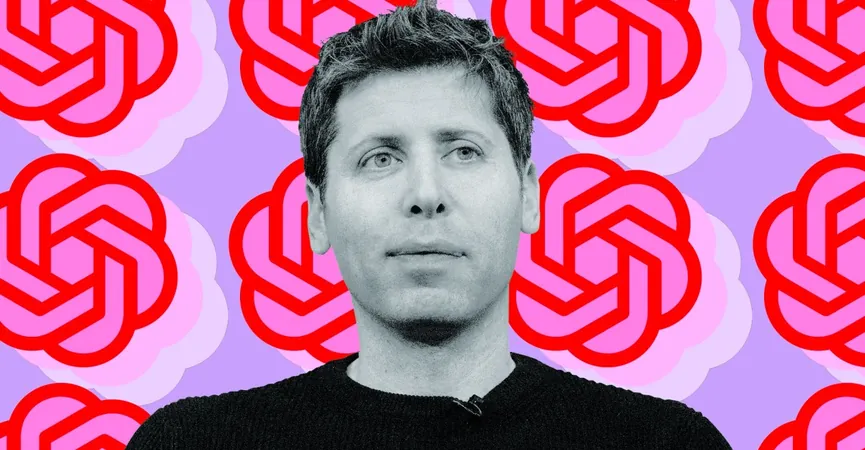
Sam Altman's Take on Photos: A Mix of Truth and Misunderstanding
2025-08-12
Author: Yan
In a recent interview, tech guru Sam Altman stirred debate with his insights on the future of photography, stirring both agreement and irritation among critics.
When asked by journalist Cleo Abram about distinguishing reality from AI-generated content, Altman referenced a viral video of adorable bunnies bouncing on a trampoline—so charming, yet entirely created by artificial intelligence. This raises an intriguing question: as AI technology continues to evolve and permeate our lives, how will we discern what’s genuine?
Altman's response delves into the processing that occurs within a smartphone camera—"Even a photo you take out of your iPhone today, it’s like, mostly real but it’s a little not," he explained. This processing involves sophisticated algorithms that modify the raw data captured from light and transform it into the polished images we see on our screens.
While he's not wrong—today’s images often reflect a more 'optimized' version of reality—there's a significant contrast between natural photos and those conjured by AI. Altman's argument seems to blur these lines, potentially misrepresenting the inherent differences.
For instance, most users remain oblivious to the intricate processing involved in their photographs. Despite occasional oddities, smartphones typically don’t fabricate elements that aren’t already present in the scene.
While Altman's perspective may resonate with the notion that our perception of reality is evolving, especially in the age of Photoshop and social media, it overlooks a crucial factor: the emotional connection we have to authenticity. The enjoyment we derive from a whimsical bunny video hinges on its authenticity—once we learn it's fabricated, its charm diminishes.
Even though we’ve learned to accept certain alterations in media, imagining a future flooded with AI-generated content raises concerns about our engagement. If the digital landscape becomes overrun with synthetic creations, the thrill we once derived from real-life wonders may quickly fade. Perhaps in the near future, we’ll find ourselves gravitating toward technology that promotes genuine experiences.
As Altman might suggest, our definitions of reality will continue to shift, but the desire for authenticity remains critical to our enjoyment. After all, nothing beats the delightful spontaneity of animals in their natural antics—even if we can’t resist a good AI-driven spectacle.

 Brasil (PT)
Brasil (PT)
 Canada (EN)
Canada (EN)
 Chile (ES)
Chile (ES)
 Česko (CS)
Česko (CS)
 대한민국 (KO)
대한민국 (KO)
 España (ES)
España (ES)
 France (FR)
France (FR)
 Hong Kong (EN)
Hong Kong (EN)
 Italia (IT)
Italia (IT)
 日本 (JA)
日本 (JA)
 Magyarország (HU)
Magyarország (HU)
 Norge (NO)
Norge (NO)
 Polska (PL)
Polska (PL)
 Schweiz (DE)
Schweiz (DE)
 Singapore (EN)
Singapore (EN)
 Sverige (SV)
Sverige (SV)
 Suomi (FI)
Suomi (FI)
 Türkiye (TR)
Türkiye (TR)
 الإمارات العربية المتحدة (AR)
الإمارات العربية المتحدة (AR)